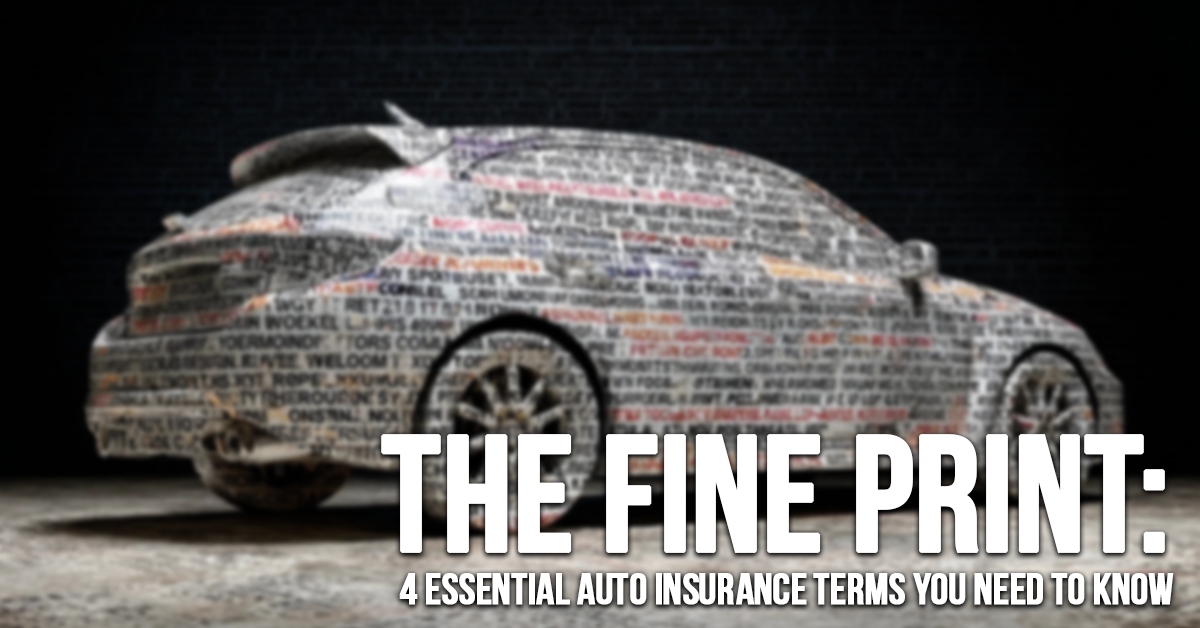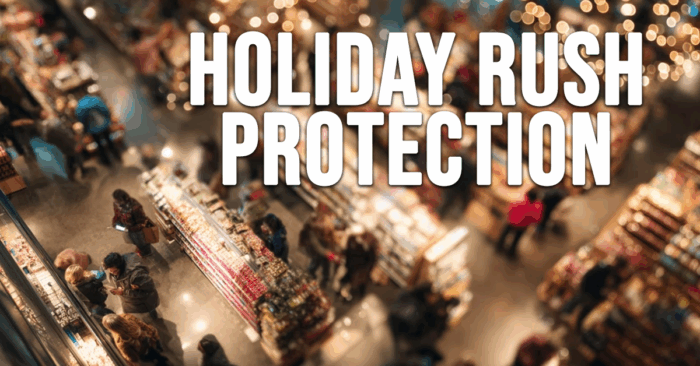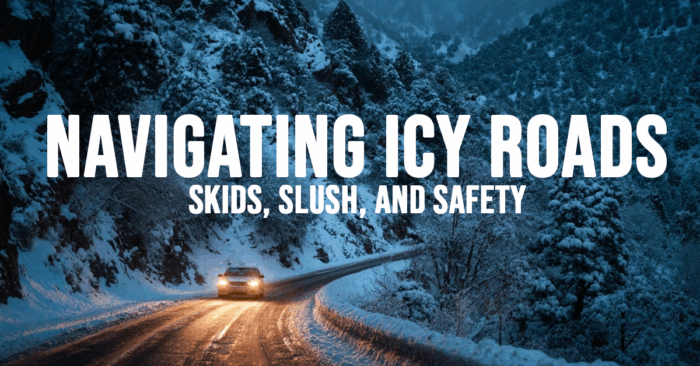Decoding the Fine Print: 4 Essential Auto Insurance Terms You Need to Know

Decoding the Fine Print: 4 Essential Auto Insurance Terms You Need to Know
Let’s face it: insurance, and particularly the jargon surrounding automobile insurance, can be incredibly perplexing. It’s a language filled with specific terms and conditions that aren’t always intuitive. This inherent complexity is a significant reason why speaking with a knowledgeable human being, like one of our independent insurance agents, can be so incredibly beneficial. They can provide personalized explanations and guidance tailored to your specific needs and circumstances. However, when you’re navigating the often-overwhelming landscape of insurance options on your own, understanding the true meaning behind certain key terms can be not just helpful, but absolutely vital in preventing you from making potentially expensive and coverage-limiting mistakes. Here are four critical auto insurance terms that every driver should fully comprehend:
1. State Minimum Coverage:
Every state in the United States has some form of financial responsibility law in place for drivers. In the vast majority of cases, this translates to a mandatory requirement to carry automobile insurance. These laws stipulate “state minimums” – the absolute minimum levels of coverage you must possess to legally operate a vehicle within that particular state. It’s crucial to understand that “state minimum” is precisely what it sounds like: the bare minimum your state demands. It is not the suggested amount of coverage, the optimal amount for adequate protection, or even necessarily the most cost-effective amount in the long run. For most individuals and families, relying solely on state minimum coverage leaves them dangerously underinsured and vulnerable to significant financial risk in the event of an accident. We strongly encourage you to discuss affordable options with one of our agents, as increasing your coverage beyond the state minimums can drastically improve your protection and overall benefits without necessarily breaking the bank.
2. Uninsured/Underinsured Motorist Coverage:
There’s a common misconception among some drivers that purchasing uninsured motorist coverage means they are paying to insure someone else’s negligence. This couldn’t be further from the truth. Uninsured/underinsured motorist (UM/UIM) insurance is designed to protect you, the policyholder, when you are involved in an accident caused by another driver who either has no insurance at all (uninsured) or whose insurance coverage is insufficient to fully compensate you for your injuries and damages (underinsured). Even if the at-fault driver is taken to court and found liable, they may not possess the financial resources to pay for your medical bills, lost wages, and other related expenses. Furthermore, uninsured motorist property damage coverage can be invaluable if your vehicle is damaged in a collision with an uninsured driver and you don’t have collision coverage on your own policy. Many legal professionals strongly recommend acquiring adequate uninsured/underinsured motorist coverage as a crucial layer of protection for yourself and your passengers.
3. No-Fault Insurance:
The term “no-fault insurance” can be misleading, as it doesn’t imply that no one is to blame for causing an accident. Instead, in states with no-fault insurance laws, each person involved in an accident is typically required to have a minimum level of coverage to pay for their own injuries, regardless of who was at fault for the collision. In these no-fault states, these personal injuries are typically covered by what’s known as PIP, or Personal Injury Protection. It’s important to understand the specifics of your state’s no-fault laws, as they can significantly impact how your medical expenses and lost wages are handled after an accident.
4. Full or Comprehensive Coverage:
The terms “full coverage” or “comprehensive coverage” can create a false sense of security, leading some policyholders to believe they are protected against absolutely anything and everything that might happen to their vehicle at any time. In reality, these terms are more general descriptors of the type of coverage you have, rather than a guarantee of unlimited or all-encompassing protection. “Full coverage” typically implies a combination of liability coverage (which pays for damages you cause to others), collision coverage (which helps pay for damage to your vehicle resulting from a collision), and comprehensive coverage (which helps pay for damage to your vehicle from non-collision events like theft, vandalism, fire, or hail). It’s absolutely crucial to delve beyond these general terms and fully understand all the specific provisions, exclusions, and coverage limits outlined in your policy to avoid any unwelcome surprises when you need to file a claim. Features like car rental reimbursement, for example, are often additional coverages and not automatically included in a “full” or “comprehensive” policy.
You might be tempted to believe that purchasing your auto insurance DIY-style online will automatically translate to significant cost savings. While online comparison tools can be helpful for initial research, the most effective way to ensure you’re getting the best coverage at a comfortable price is to compare options from multiple reputable insurance companies. This is precisely where our independent insurance agents excel. They have established relationships with a vast network of insurance providers, allowing them to shop around on your behalf and deliver exceptional coverage options tailored to your individual needs and budget. Don’t leave your auto insurance to chance or rely solely on potentially misleading terminology. Give the personalized service and expertise of an independent agent a try. Contact one of our independent automobile insurance agents today for a no-obligation quote and gain the peace of mind that comes with truly understanding your coverage.
Do you have questions about your insurance? Find an insurance agent near you with our Agent Finder
Search All Blogs
Search All Blogs
Read More Blogs
Tinsel and Tropes: A Cozy Look at Why Classic Christmas Movie Moments Endure
From Zuzu’s petals to the leg lamp: Dive into the nostalgic tropes and timeless comfort of our favorite classic Christmas films.
The Silent Season: Securing Inventory and Operations During Christmas and Year-End Closures
Closing the shop for the holidays? Key business insurance checks for protecting vacant property and high-value inventory from theft and winter damage.
The Most Sustainable Gift: Life Insurance and the Value of Income Continuation Planning
Life insurance ensures the Christmas cheer continues. Practical tips on using income continuation math to calculate the right term policy size for your family.
From Home to Holiday: Securing Your Christmas Road Trip Auto Coverage Checklist
Heading over the river and through the woods? Your Christmas road trip needs an auto insurance checkup, focusing on roadside assistance and UIM coverage.
The Fire Under the Fir: Insuring Against Christmas Tree Calamity and Holiday Fire Risk
Don’t let a dried-out tree ruin Christmas. Essential home insurance tips for fire safety, electrical risk, and candle liability during the holiday season.
Cozying Up: Embracing the Danish Art of Hygge for a Stress-Free December
Banish the December chaos! A simple guide to adopting Hygge—the Danish concept of cozy contentment—for a truly joyful holiday season.
Tinsel, Traffic, and Transactions: Insuring Your Business Against December’s Holiday Rush Risks
Don’t let the holiday rush expose your business. A guide to essential commercial insurance coverages for increased sales, foot traffic, and cyber threats in December.
The Ultimate December Gift: Why Life Insurance is the Most Important Present You’ll Ever Give
Forget the gadgets; life insurance is the real gift of security. A timely look at protecting your family’s future during the season of giving.
Skids, Slush, and Safety: How Your Auto Insurance Navigates the December Driving Nightmare
Essential auto insurance checks and tips for safe, claim-free driving through December’s challenging winter weather and holiday traffic.
Snowed In, Safely Covered: A December Guide to Home Insurance and Winter Preparedness
Don’t let winter woes ruin your holiday cheer. Essential tips on home insurance coverage for snow, ice, and festive accidents.









